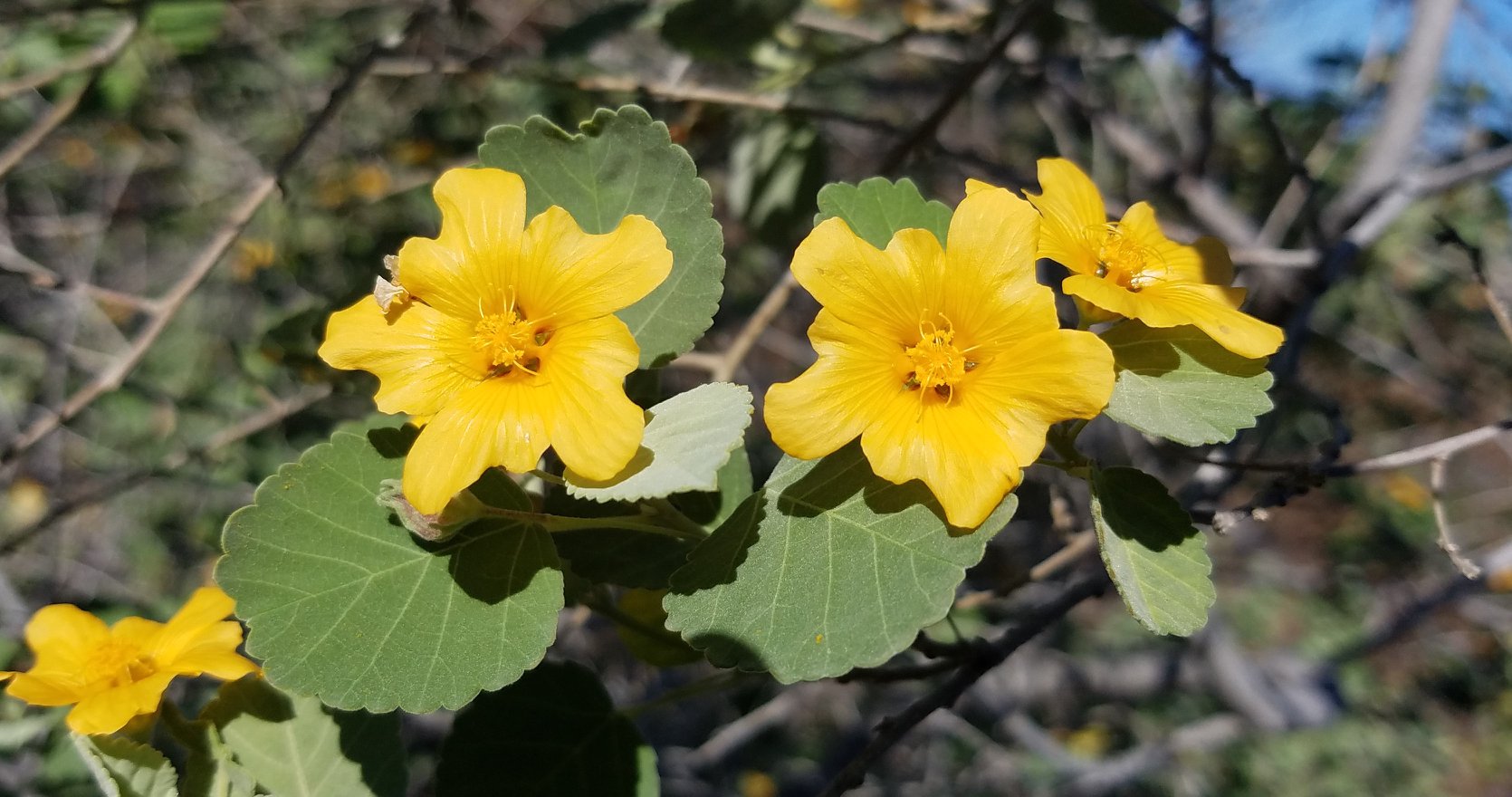‘Ilima is found all throughout the dry and mesic forests of Hawai‘i, from sea level to well beyond 6500’ elevation. It is a common sight in the forests and is easily spotted with its light green leaves and typically golden yellow flowers. Another native representative from the mallow/ hibiscus family (Malvaceae), ‘ilima can take on many different forms and display a wide range of morphological traits. Leaves can range from a 0.5 to 5 inches and be fuzzy or smooth! The plant itself has been observed as a low lying shrub, less than 2 feet in height (often called ‘ilima papa), or standing as a shrub 10 feet tall.
This plant works well in the landscape, it requires little watering once established and can tolerate a variety of soils and environmental conditions. It can remain healthy through heat, drought, wind, and salt spray; and can flourish in sand, cinder, coral, or organic ground types.
‘Ilima has been and remains a very important plant in Hawaiian culture, and is described with many different names depending on the characteristics of the plant and where on the island it may be growing. ‘Ilima is said to be one of the few non-food species to be cultivated by early Hawaiians, and although it wasn’t eaten, ‘ilima was used in many different facets of everyday life. The flowers can be used in lei or as a medicine. The stems and branches were used in housing construction as slats, as floor coverings and even used in a variety of cooking methods.
Resources:
- http://nativeplants.hawaii.edu/plant/view/Sida_fallax
- http://ntbg.org/plants/plant_details.php?plantid=10504


